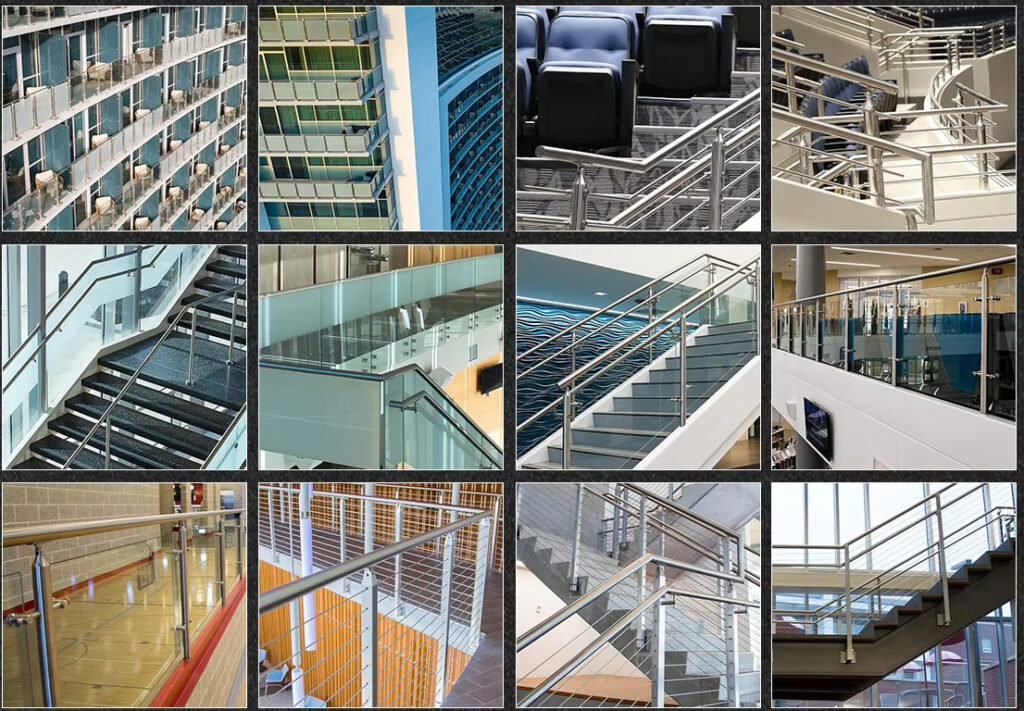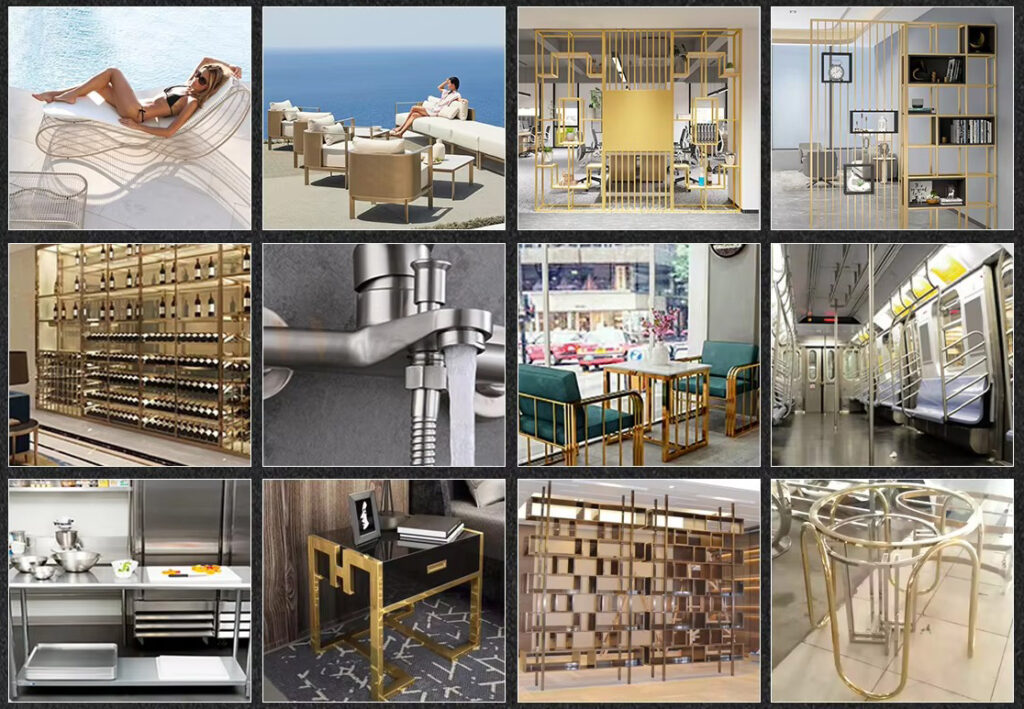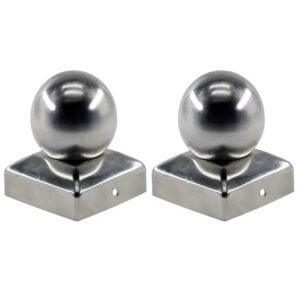
Post caps & end caps (round, square, decorative)
Post caps & end caps in 316L stainless steel. 23 years precision manufacturing for decorative applications worldwide. Request quote today.

Post caps & end caps in 316L stainless steel. 23 years precision manufacturing for decorative applications worldwide. Request quote today.
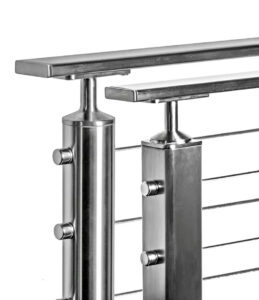
Square stainless steel posts in 304/316L grades. 23 years precision manufacturing for coastal projects worldwide. Request quote today.
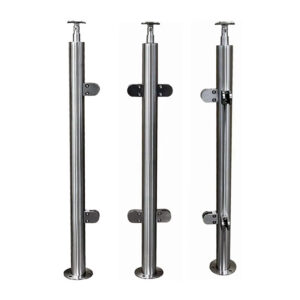
Stainless steel posts in 304/316L grades. 23+ years ODM fabrication for marine & commercial applications. Contact factory today.
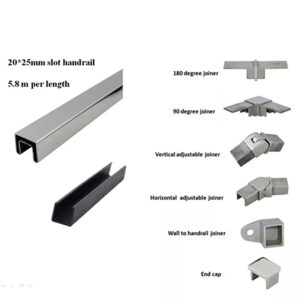
Square top rail components in 316L stainless steel. 23+ years precision manufacturing for global applications. Contact factory today.
Project-specific hardware in 316L stainless steel. 23 years delivering tailored solutions for specialized projects worldwide. Get factory quote today.
Non-standard size components in 316L stainless steel. 23+ years ODM manufacturing for unique sizing requirements globally. Contact us today.
| Specification | Our Stainless Steel Rail Connectors | Standard Aluminum Rail Connectors | Competitive Advantage |
|---|---|---|---|
| Material Grade | 304/316 Marine Stainless Steel | 6061-T6 Aluminum Anodized | Superior corrosion resistance and longevity |
| Tensile Strength | 590 MPa (304/316 grade) | 310 MPa maximum | 90% higher structural performance |
| Joint Strength | 3,500+ lbs pull-out resistance | 2,300 lbs maximum | 52% stronger connection integrity |
| Tube Compatibility | 1.25″-2.0″ (32mm-50mm) | Limited size options | Universal handrail diameter accommodation |
| Installation Method | Concealed internal connection | Visible external brackets | Enhanced aesthetic continuity |
| Operating Temperature | -40°C to +400°C | -30°C to +150°C | Extended thermal range capability |
| Corrosion Resistance | 500+ hours salt spray | 200 hours maximum | 150% superior marine environment performance |
| Service Life | 25+ years guaranteed | 10-15 years typical | 150% longer operational lifespan |
Superior Joint Integrity vs. External Bracket Systems
Our internal stainless steel rail connectors deliver exceptional structural continuity compared to external aluminum brackets that create stress concentration points. While visible mounting hardware compromises the sleek aesthetic of modern handrails, our concealed connection system maintains seamless tube profiles while providing 52% stronger joint strength through distributed load transfer.
Advanced Material Compatibility and Galvanic Protection
304/316 stainless steel rail connectors eliminate galvanic corrosion issues that occur when mixing aluminum hardware with stainless steel handrails. This material compatibility prevents the electrochemical degradation that causes premature failure in mixed-metal systems, providing indefinite service life without the structural compromise common in aluminum connector installations.
Precision-Engineered Connection Technology
Our rail connectors utilize precision-machined internal surfaces that create optimal contact area with handrail tubing, distributing loads across the entire connection zone. Unlike external brackets that rely on point loading through mechanical fasteners, internal connectors provide 360-degree load distribution that prevents stress concentrations and fatigue failures.
Temperature Stability and Thermal Expansion Management
Stainless steel maintains dimensional stability from -40°C to +400°C, preventing the thermal expansion issues that cause aluminum connectors to loosen during temperature cycling. The matching thermal expansion coefficient between connector and handrail tube eliminates differential movement stress that compromises aluminum joint integrity over time.
Luxury Residential Curved Staircase Systems
High-end homes with spiral staircases require concealed rail connectors that maintain smooth handrail profiles around complex curves and elevation changes. Our precision-engineered internal connections provide structural continuity where external brackets would interrupt the flowing aesthetic essential to premium architectural design.
Commercial Office Building Continuous Handrails
Corporate facilities with long corridor handrails utilize straight and angled rail connectors to create seamless runs exceeding 100 linear feet. The concealed connection system eliminates visual interruptions while providing the structural integrity required by IBC load standards for commercial egress routes.
Healthcare Facility ADA-Compliant Installations
Medical environments demand hygienic rail connectors that eliminate crevices where bacteria could harbor. Our smooth internal connection system creates continuous surfaces that meet hospital sanitization requirements while providing the structural reliability essential for patient mobility support.
Industrial Platform Handrail Systems
Manufacturing facilities require chemical-resistant rail connectors that withstand process vapor exposure and temperature fluctuations. Our 316 stainless steel construction maintains joint integrity in environments where aluminum hardware would corrode or lose grip strength within 2-3 years.
Marina and Waterfront Railing Installations
Harbor-side properties install marine-grade rail connectors on floating dock handrails subjected to constant moisture and salt exposure. Our 316 stainless steel construction eliminates the galvanic corrosion issues that cause premature failure in aluminum systems paired with stainless steel handrails.
Educational Institution High-Traffic Areas
Schools and universities utilize heavy-duty rail connectors in stairwells and corridors where impact resistance and vandal resistance are critical. Our internal connection system withstands student traffic and accidental impacts that would compromise external bracket systems within the first academic year.
What types of rail connectors are available for different handrail configurations?
We offer straight connectors for linear runs, left/right-hand angled connectors for direction changes up to 135 degrees, T-connectors for branch connections, and adjustable connectors for elevation changes up to 45 degrees. Each type maintains the same concealed installation method and structural performance standards while accommodating specific architectural requirements.
How do internal rail connectors compare to external bracket systems for structural performance?
Internal rail connectors provide 52% stronger joint strength through 360-degree load distribution, compared to external brackets that create stress concentration points through mechanical fasteners. The concealed design eliminates visual interruptions while distributing loads across the entire connection zone, preventing fatigue failures common in point-loaded bracket systems.
What installation requirements and tools are needed for stainless steel rail connectors?
Installation requires precision drilling to accommodate connector dimensions, with rail adhesive application to ensure permanent bonding. Our connectors are designed for 1.25″ to 2.0″ diameter tubes with specific insertion depths that maintain structural integrity. Professional installation tools include tube end preparation equipment and adhesive application systems.
Can rail connectors accommodate thermal expansion in long handrail runs?
Yes, our stainless steel connectors have matching thermal expansion coefficients with handrail tubing, eliminating differential movement stress. For runs exceeding 100 linear feet, we recommend strategic placement of expansion joints at intermediate supports to accommodate total system movement while maintaining connector integrity.
How do 304 and 316 stainless steel grades compare for different connector applications?
304 stainless steel provides excellent performance for indoor and mild outdoor environments, offering superior strength and aesthetics compared to aluminum. 316 grade includes molybdenum for enhanced chloride resistance, making it essential for coastal properties within 5 miles of saltwater, marine environments, and applications with chemical exposure.
What building codes and load requirements govern rail connector installations?
Rail connectors must support handrail load requirements per IBC Section 1607.8, including 200-pound concentrated loads and 50 pounds per linear foot uniform loads. Our connectors exceed these requirements with documented 3,500-pound pull-out resistance, providing 100% safety margins required for commercial applications.
Are there aesthetic advantages to using concealed rail connectors over visible hardware?
Concealed rail connectors maintain seamless handrail profiles essential for modern architectural aesthetics, eliminating visual interruptions from external brackets or visible fasteners. This creates continuous flowing lines that complement contemporary design elements while providing superior structural performance compared to visible mounting hardware.
How do maintenance requirements compare between stainless steel and aluminum rail connectors?
Stainless steel rail connectors require no maintenance beyond periodic handrail cleaning, as the concealed installation protects connections from environmental exposure. Aluminum external brackets require regular inspection for corrosion, coating touch-up, and potential replacement every 10-15 years, plus more frequent cleaning to prevent permanent staining from galvanic corrosion.
Building Code Compliance Standards
Rail connector installations must comply with IBC Section 1014 handrail requirements and ASTM F1169 load testing procedures for structural integrity. All connectors undergo tensile testing per ASTM A370 standards with documented proof loads exceeding 3,500 pounds pull-out resistance, surpassing IBC requirements by 100% safety margins for commercial applications.
Material Specifications and Certifications
Rail connectors manufactured from ASTM A276 stainless steel bar stock with certified mill test certificates documenting chemical composition and mechanical properties. Threading and dimensional specifications comply with ANSI/ASME B18.6.3 standards for precision fit and structural performance. Marine-grade 316 installations include NACE SP0169 atmospheric corrosion compliance.
Installation Standards and Procedures
Professional installation follows AWS D1.1 structural standards for adhesive bonding procedures and joint preparation requirements. Connector placement calculations ensure optimal load distribution while maintaining handrail continuity per architectural specifications. Engineering documentation provided for projects requiring structural analysis and permit approval.
Quality Assurance and Manufacturing Standards
Production follows ISO 9001:2015 quality management with documented material traceability and inspection procedures. CNC machining maintains ±0.1mm tolerance for precision fit with handrail tubing. Surface finish standards achieve 32 Ra maximum for optimal adhesive bonding and corrosion resistance performance.
Load Testing and Performance Verification
All connector designs undergo finite element analysis to verify stress distribution and fatigue resistance under cyclic loading. Physical testing per ASTM E935 standards demonstrates structural performance exceeding building code requirements. Documentation includes proof load certificates for critical commercial applications requiring engineering approval.
Professional Installation and Certification
Installation procedures meet OSHA 1926.502 safety standards for construction applications. Professional installation certification available through certified contractor programs for complex commercial projects requiring structural engineering calculations. Technical support includes 3D modeling and load analysis for non-standard architectural applications.

